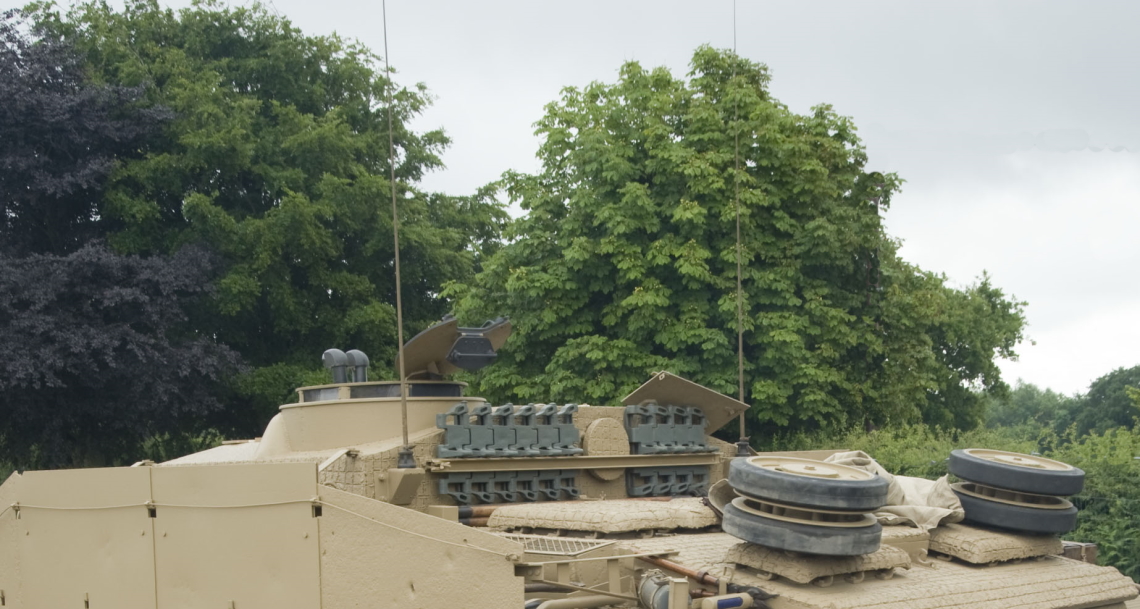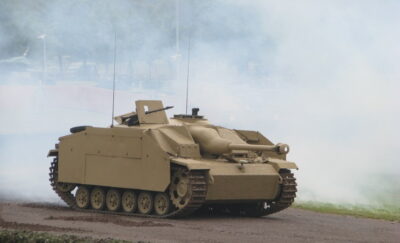November 1943. German forces were engaged in a desperate battle to retain control of the Crimean Peninsula. They faced assaults to the north on the Perekop Isthmus, to the east on the Kertsch Peninsula and a sea borne assault on Kertsch itself. One of the few armoured units still available to the Germans was the 191st ('Büffel') Sturmgeschütz (StuG) Brigade.
The Germans struggled to keep their forces resupplied with their lines of communication under constant air and sea attack.
Towards the end of November 1943, the German supply ship Sante Fe sailed in convoy Wotan from the Romanian port of Konstanza. The ship was carrying supplies and replacement vehicles for the beleaguered German forces, including the 191st Brigade. Only a few hours short of her destination a torpedo slammed into her. Torn apart by internal explosions she broke in half and sank. 1278 tons of vital military cargo had gone to the bottom including ammunition, fuel, 2 Jagdpanzer and 12 Sturmgeschütze assault guns (StuGs).
In 2002 an ambitious plan was hatched to recover some of the vehicles from the wreck. After considerable risk, effort, and expense, divers succeeded in recovering two StuGs.
We were determined to secure a StuG with German provenance given that the majority of survivors did not serve with German forces during WWII. One of the Sante Fe StuGs fitted the bill perfectly. This ticked the boxes of German service and was accompanied by a spectacular provenance - albeit somewhat short.
Once the StuG arrived in the UK, a complete photographic and technical survey was undertaken. This included detailed measurements of every feature, both interior and exterior. As with any such restoration details, production information and history are critical parts of the task. These details are built up over the course of the project. This is crucial to help assist in the repair, replacement or manufacture of components to ensure that they are in keeping with the original condition of the vehicle.
It was important to establish where the vehicle had been manufactured. The chassis number revealed that the StuG was produced by MIAG (Mühlenbau Industrie AG) and came off the assembly line in late October early November 1943.
The catastrophic explosion at the time of the sinking, had caused a massive amount of damage. The floor of the vehicle had been cracked substantially and a large section had collapsed. In addition to the damage, the survey had revealed that the StuG, had been extensively sandblasted and chemically scrubbed. Together with a modern layer of camouflage paint, which obscured, or obliterated many small details.
To begin the restoration, the chassis hull was separated from the superstructure. The suspension components were stripped from the chassis. We encountered tremendous problems with the removal of the torsion bars. The gearbox casing had disappeared altogether leaving the gear clusters exposed. All the aluminium items including the gearbox casing, the fan shrouds and fans were gone. However, the thin sheet steel had survived and most of the floor plate was present. Panels were cut to original dimensions using research from various sources. A replacement firewall was fitted. A diamond shaped floor pattern was used and matched to the original panels.
Initially the engine looked surprisingly good despite being heavily encrusted, however a large hole under the block was discovered. The uncovering of this damage ended any thought of restoring the engine. Fortunately, a contact from Berlin had tracked down a working engine. Except for an original fan housing sourced in Europe, all the other components in the engine bay were cast or fabricated. These included the fans, fan hubs, remaining fan housing and radiators.
The gun was seized solid and no amount of work would budge the breech assembly. Fortunately, we managed to replace it with a working example in good condition.
Zimmerit was applied to the vehicle. This was an anti-magnetic mine paste applied to StuGs leaving the factory from August 1943 through to September 1944. The theory was that an application of the paste would provide a protective layer against magnetic mines. The paste was not anti-magnetic but provided an uneven layer up to 6mm thick which prevented magnets sticking to the steel.
Another challenge was the Schurtzen. All StuGs completed by MIAG in 1943 and early 1944 had steel plates or skirts (Schurtzen) hung on a frame attached to the side of the vehicle. These were designed to resist 14.5 mm anti-tank rifle fire. The plates were locked into place using two smaller plates mounted on the upper exterior of the larger plates which were bolted together.
Many of the road wheels were in remarkably good condition, the synthetic rubber had survived well unlike the steel. The rubber was repaired, and the road wheels exchanged for good rims.
When deciding what tracks would have been fitted to an October/November 1943 StuG, we selected an early track link on the strength of several factory-issue MIAG photographs.
- This article has 808 words
- Reading time: 4 minutes
- There are 2 photos
Become a Member - Access the Full Article
Members gain access to the full content of our articles, including photo galleries.


